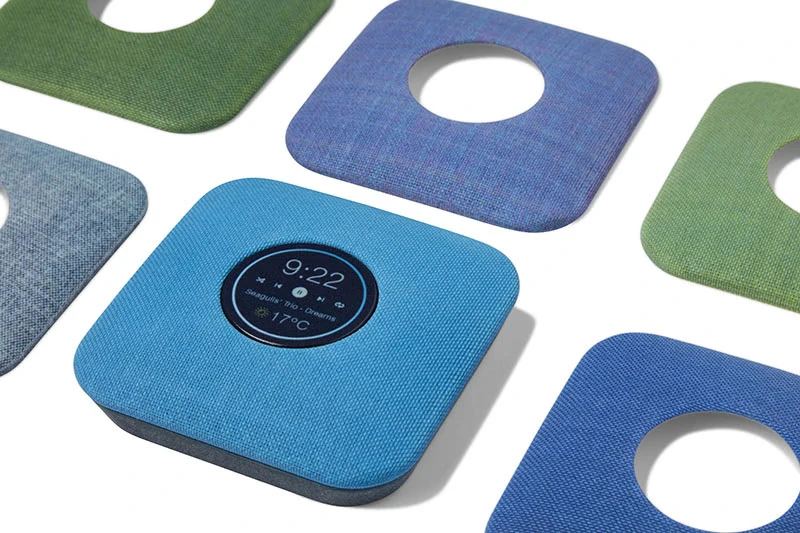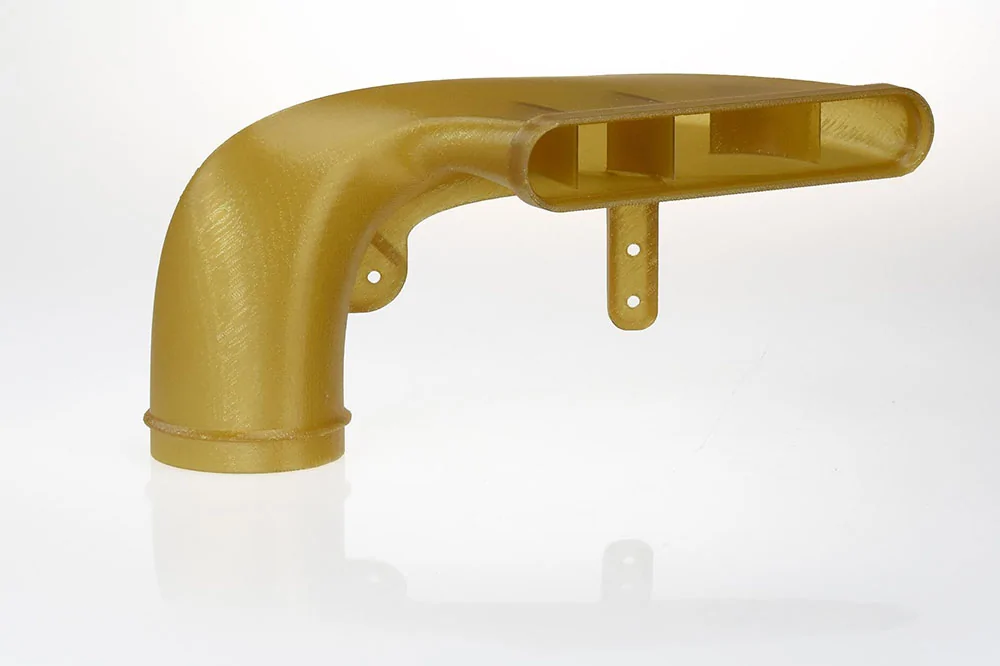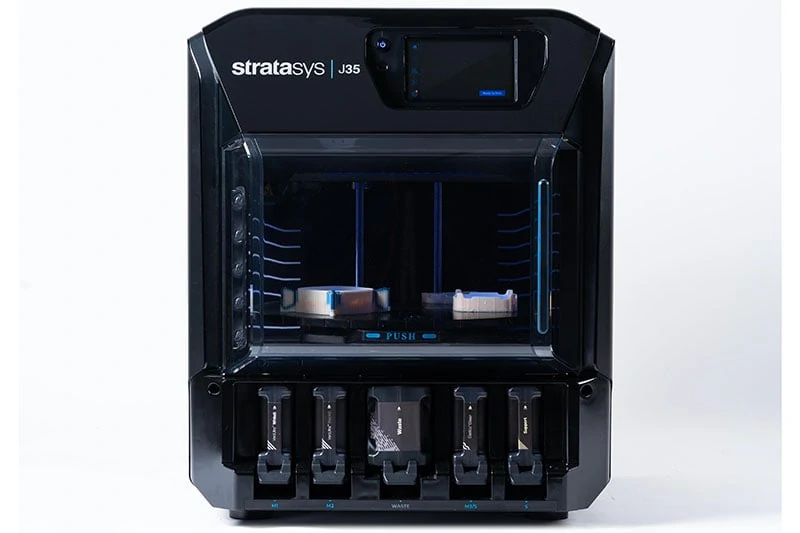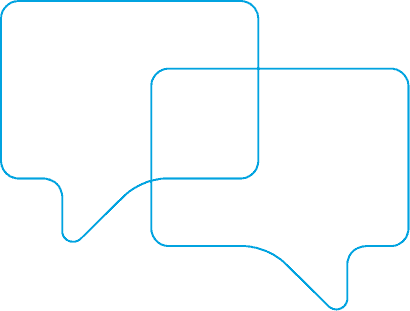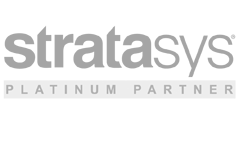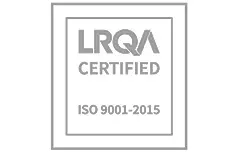
What is the difference between FDM and Polyjet 3D printing technology?
Both FDM and Polyjet printing are a form of 3D printing technology. Whether you are buying your first 3D printer or upgrading an old one, it is important to understand the difference between the two leading printing technologies. To buy a 3D printer, you must first consider what kind of items you need to produce. The choice between a Polyjet or an FDM printer will likely be determined by this, rather than by the technology itself.
“If at all possible, you should weigh up the relative benefits of material and output choice and what each can do in terms of durability, flexibility and fidelity to the original design,” says Laser Lines’ Sales Director Mark Tyrtania. “Once you’ve done that, you can narrow down your selection to the machines that fit your budget.”
“You might find that a single 3D printer won’t do everything your company needs. But in our experience it’s often the case that one technology will cover at least 80% of any firm’s requirements. The remaining 20% can then be satisfied by using bureau services like the one offered by Laser Lines.”
Extrusion
Both Fused Deposition Modelling (FDM) and Polyjet printers build 3D models layer by layer. The process by which they do this however, differs greatly.
Whilst FDM 3D printers heat a thermoplastic filament in order to create layer, Polyjet 3D printing relies on the use of liquid polymers, jetted onto the printer bed.
During FDM printing, a coil of fine thermoplastic wound on a spool is heated and extruded in a continuous bead of semi-molten material. Once deposited, it cools and solidifies to form a new layer – just one of many that form the finished model.
Below is a video that outlines the process:
In contrast to this technique, during Polyjet printing, after being jetted onto the subsequent layer, the layers of liquid polymer are cured through exposure to ultraviolet light.
Below is a video that shows the process of Polyjet printing:
Fidelity and durability
FDM models are more robust than those created with Polyjet printing technology. Depending on your choice of material, FDM models can also be made to withstand high temperatures and more demanding working conditions and environments, making them more durable than Polyjet models.
This is what Tyrtania had to say about FDM printing: “The result can often be stronger than a Polyjet model, and where Polyjet parts can sometimes minutely change shape over time, an FDM product will be more dimensionally stable.”
There are trade-offs however, the most obvious of which is the fact that the layer thickness used by an FDM 3D printer isn’t as fine as with Polyjet printing. Due to this, Polyjet printing allows for smoother surfaces on curves, slopes and gradients, whereas an FDM model may contain visible layers. FDM printing is therefore better suited to printing parts that require mechanical strength over aesthetic appeal.
Through the use of jetted liquid polymers, Polyjet technology boasts impressive product fidelity. The process allows for high levels of final product realism, smooth surfaces and fine feature details. Depending on the material, Polyjet parts can have a range or combination of properties from rigid to flexible; full colour to clear; or even medical compatibility. This makes Polyjet the favoured technology for concept and form models where the finished appearance is important, such as consumer products and electronics.
Choice of materials
When used for the right applications, Polyjet wins hands down on material variety. With a choice of more than 1,000 materials and the option to blend multiple digital materials within the printing process, Polyjet printing is extremely flexible. The blending of multiple digital materials is an impressive advance in 3D printing technology.
The latest Stratasys J-Series machines, such as the Polyjet J850 Prime, use this internal mixing ability to great effect. With multiple model materials loaded simultaneously, mixed material parts, mixed material builds and full colour parts are easily achievable.
Materials used across the Polyjet range include colourful, multipurpose polymers from the Vero family, medical and dental printing materials, rubber-like materials such as Elastico, rigid opaque materials and many more. Polyjet printing also enables modelling of transparent parts (or semi-transparent through mixing), producing fully flexible models with a scale of rigidity that can match anything from a soft gasket to a vehicle tyre (Shore A 27 to 95).
Whilst FDM printing materials are somewhat limited in comparison to Polyjet printing, eliminating the possibility of flexible part production, its output is often more durable. Parts can be built using heat- and flame-retardant materials and from ABS, ASA, PC-ABS and Polycarbonate. This makes FDM well-suited to producing end use parts, finished jigs, fixtures and tools for immediate use, rather than for use as just a prototyping platform.
As mentioned above, Polyjet can be used to produce dental and medical equipment. Where required however, either technology can be used in the production of medical equipment, food packaging and kitchen utensils, when supplied with consumables that conform to ISO 10993 ratings.
Running costs
The purchase cost of raw consumables is broadly the same, whichever platform you opt for, but the rate at which they are used can vary significantly. The more rigid build of a typical FDM– model, and the fact it is constructed from a material that is already semi-solid at the point of deposition, means it will be much better at supporting itself. It therefore requires fewer support structures than a Polyjet part, using less raw material during the printing process.
Further to this, whilst FDM printers require an ongoing supply of build trays and extrusion nozzles, Polyjet devices may need to have their whole print heads replaced after every 2000 hours of use, which represents a higher running cost.
In Laser Lines’ experience, most people buying a 3D printer are looking to run their machines for seven or eight years before upgrading or trading them in. Many people simply ask: ‘how much does an FDM printer cost?’ or ‘what is the cost of Polyjet printing?’ When comparing costs however, these small differences should be taken into account and considered over the course of their service life, in order to ensure accurate cost analysis.
Size and complexity
Polyjet is the more complex option from a technological standpoint, allowing for multiple digital materials to be mixed and used in one model. In reality however, it is no more difficult to use than an FDM machine. Regardless of the process used to create them, all 3D parts are sent to the printer as an STL (StereoLithography) file, or as a VRML file or native CAD data if you are using GrabCAD Print. This means that production can be underway after just a few mouse clicks in the case of both Polyjet and FDM printing.
In terms of maximum print size, this does not differ significantly between each style of machine. Each printing technology tops out at around 1000 x 800 x 500mm. However, the relative simplicity of the FDM process means that the printer itself is often a little more compact. If space is a factor and you are looking to buy at the smaller end of the scale, an FDM printer may be the more suitable option. To illustrate this, if the majority of the models that you plan to produce are no more than 240mm at their longest point, a capable FDM device will be able to comfortably sit on the end of a regular desk. Many Polyjet machines require a work area of their own, but there are models that will fit in an office environment, such as the Stratasys J35 Pro.
Post processing
It is common for models produced using either technology to require some support structure during the build process – although due to the rigid build type in FDM printing, parts made in this way will often need fewer supports overall.
Support material needs to be removed, and although FDM has had the edge in this respect for several years, Polyjet is quickly catching up. Depending on the material used to build a model, the support scaffold on an FDM part can simply be snapped off or, if printed using one of the soluble support materials, dissolved in a wash tank. Depending on your needs, some users may benefit from a DyeMansion post-processing system that can clean, smooth, polish and add colour to 3D printed parts.
An equivalent wash process has recently become available for Polyjet parts making support removal a more simple process. Using a two-step soak and rinse method, users are now able to remove SUP706 polymer supports in a similar fashion to soluble FDM supports. This means that both soluble support options on FDM and Polyjet machines offer ‘hands-free finishing’, freeing up the users’ time.
Choosing the right printer for you
There are many factors to consider when buying a 3D printer, from the required applications and choice of materials to its overall running cost. In many ways, the initial capital investment is a secondary consideration – and one that can be offset against the printer’s long service life, the ability to recoup the purchase through in-house production, and generous trade-in deals when you come to upgrade.
You can also choose to lease a 3D printer, helping you to get the benefits of additive manufacturing while minimising the impact on your cash flow. With deals typically available between two and five years, you can find out more about 3D printer leasing here.
As an area of rapid development, it pays to keep up with the changes in 3D printing technology, allowing for more complex products to be created and often saving users valuable time. In our experience, the excitement lies not in how output is achieved by 3D printing machines, but the way in which 3D printing is changing the way the world thinks about rapid, local production.
Need a little more information before making your final decision? Call Laser Lines on 01295 672599 or email [email protected] to discuss your requirements with one of our 3D printing experts. We also have a wide range of printers at our Banbury site and the ability to print test models via our 3D printing bureau.

